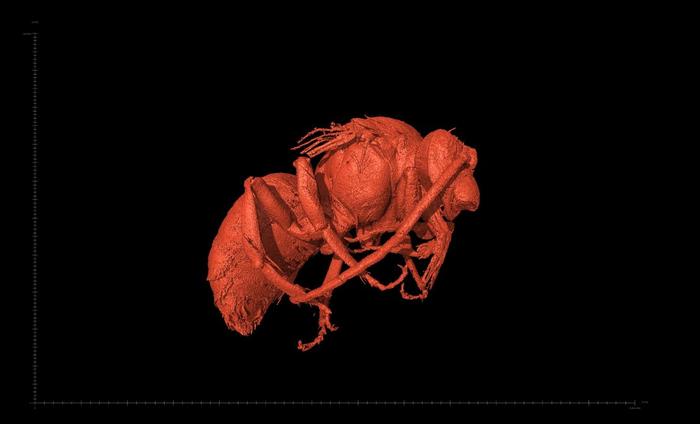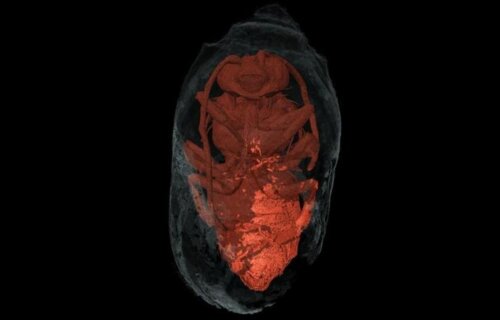SEVILLE, Spain — Unprecedented new fossilized findings in southwest Portugal are providing researchers with a peek into the distant past. However, researchers from the University of Seville say these ancient “mummified” insects may also provide valuable insights in the fight against climate change today.
Researchers found the incredibly well-preserved bees still within their cocoons, describing them as “ready to leave their nests or cells in an exceptional state of conservation.”
They even found food within the bees’ cocoons, with researchers adding the centuries-old snacks appear to be Brassicaceae pollen, likely collected once upon a time from common herbaceous species. This indicates the ancient the bees also had a preference for one particular variety.
Study authors explain that finding this variety of ancient bees in such a well preserved state is “extremely rare,” especially considering the skeletons of these insects usually decompose quickly. This incredible level of conservation has allowed the research team to successfully identify the type of bee, their gender, and even the pollen levels left by their mothers during the creation of their cocoons.
Bees are incredibly important to our planet’s ecosystem. More specifically, they serve as a key group of pollinating insects featuring over 20,000 distinct species. Roughly three quarters of all wild bee species are known to nest in soil and spend most of their life cycle underground, thus promoting the preservation of their nesting structures.
This latest work details dense collections of thousands of fossil nests per square meter in southwest Portugal. Most of those nests or cells have been classified as belonging to the ichnogenera Palmiraichnus.

While these fossilized remains are interesting and groundbreaking all on their own, their discovery also poses a rather nagging question — What were the potential environmental factors and causes that resulted in the bees’ deaths, and a burial that ensured the specimens remained in such a well preserved state for 3,000 years?
While study authors still can’t say for sure what caused the bees’ deaths, they speculate a shortage of oxygen caused by sudden flooding, as well as a drop in nocturnal temperature, may have been key factors. The southwest coast of Portugal is believed to have dealt with slightly colder periods with greater rainfall during winter in the Neoglacial interval, which would have fostered favorable climatic conditions for the formation of such fossils.
“Bees are pollinating insects and as such are essential for ecosystems, to the extent that any reduction in their numbers would directly affect biodiversity, or rather, the many species of plants and animals that directly or indirectly depend on them, including human beings. For example, we know that bees pollinate 70% of the crops that people eat and 30% of food for livestock. Human activity, such as intensive farming, the use of pesticides and insecticides and climate change are creating a situation where one in every ten species of bees is in danger of extinction in Europe,” says Fernando Muñiz, professor of the department of Crystallography, Mineralogy and Agricultural Chemistry at the University of Seville, in a media release.
“Discovering and interpreting the ecological reasons for the presence of this population of bees and why they died and were mummified 3,000 years ago, may help us to understand and establish strategies for resilience in the face of climate change, such as comparing the ecological imbalances caused by natural parameters and the current ones and the way in which they are affecting the bee species of today,” concludes principal investigator Carlos Neto de Carvalho.
The study is published in the journal Paleobiology.

